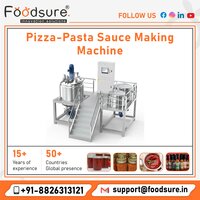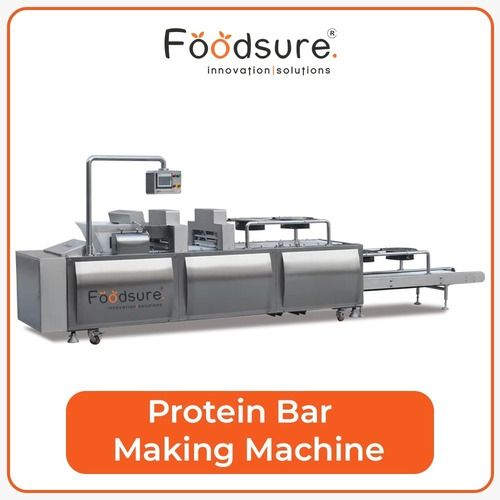Pizza Pasta Sauce making Machine
Product Details:
- Product Type Sauces
- General Use Commercial, Industrial
- Material Stainless Steel
- Capacity upto 1000 kg Kg/hr
- Weight (kg) 1000 Kilograms (kg)
- Product Shape Other
- Computerized Yes
- Click to View more
Pizza Pasta Sauce making Machine Price And Quantity
- 100000.00 INR/Unit
- 1 Unit
Pizza Pasta Sauce making Machine Product Specifications
- Free Stand
- 440 V Watt (w)
- 1000 Kilograms (kg)
- Yes
- Other
- upto 1000 kg Kg/hr
- 20 kw Watt (w)
- Sauces
- ECO Friendly, Low Noice, Lower Energy Consumption, Compact Structure, High Efficiency
- PLC Control
- Other
- Commercial, Industrial
- 1 year
- Yes
- Stainless Steel
Pizza Pasta Sauce making Machine Trade Information
- New Delhi
- Paypal, Cash Against Delivery (CAD), Cash on Delivery (COD), Cash Advance (CA), Cash in Advance (CID), Cheque
- 10 Unit Per Month
- 30 Days
- Yes
- Free samples are available
- Wooden, Bubble Wrap
- Asia, Australia, Central America, North America, South America, Eastern Europe, Western Europe, Middle East, Africa
- All India
- ISO9001;2015
Product Description
The process of making pizza pasta sauce involves larger-scale equipment and standardized procedures to ensure consistency and efficiency. Here is an outline of the typical process in a factory:
Ingredient Preparation:
Gather the necessary ingredients in bulk quantities, including canned tomatoes, tomato paste, olive oil, minced garlic, chopped onions, dried herbs, salt, pepper, and any other required ingredients.
Ensure that all ingredients are properly stored, labeled, and readily available for the production process.
Mixing and Blending:
Use industrial-scale mixing equipment, such as large vats or tanks, to combine the ingredients in the required proportions.
Automated systems can be used to measure and add the ingredients accurately, ensuring consistency in each batch.
Cooking:
Transfer the blended sauce mixture to large cooking vessels, such as industrial kettles or steam jacketed kettles.
Heat the sauce mixture to a controlled temperature and cook it for a predetermined duration to develop the flavors and ensure food safety.
Stirring mechanisms within the cooking vessels help prevent scorching and ensure even heat distribution.
Seasoning and Quality Control:
Add the appropriate seasonings, including dried herbs, salt, pepper, and other desired flavorings, based on the recipe or product specifications.
Conduct regular quality control checks during the cooking process to ensure the sauce meets the desired taste, consistency, and quality standards.
Cooling and Packaging:
Once the cooking process is complete, rapidly cool the sauce using industrial cooling equipment, such as cooling belts or heat exchangers.
Transfer the cooled sauce into appropriate packaging, such as cans, jars, or pouches, using automated filling machines.
Apply labels, seals, and date codes on the packaging to comply with regulations and provide product information.
Quality Assurance and Testing:
Conduct regular quality assurance checks, including sensory evaluations and laboratory testing, to ensure the sauce meets the required standards for taste, texture, and safety.
Samples may be taken from each batch for microbial and chemical analysis to verify the sauce's safety and adherence to food regulations.
Storage and Distribution:
Store the packaged pizza pasta sauce in appropriate storage areas, such as temperature-controlled warehouses, to maintain product quality.
Distribute the sauce to customers, retailers, or other distribution channels according to production schedules and customer orders.
In a factory setting, the process is often automated and standardized to ensure consistent product quality and efficient production. Industrial-scale equipment, quality control measures, and standardized recipes help optimize the production of pizza pasta sauce in larger quantities.

Price:
- 50
- 100
- 200
- 250
- 500
- 1000+


















